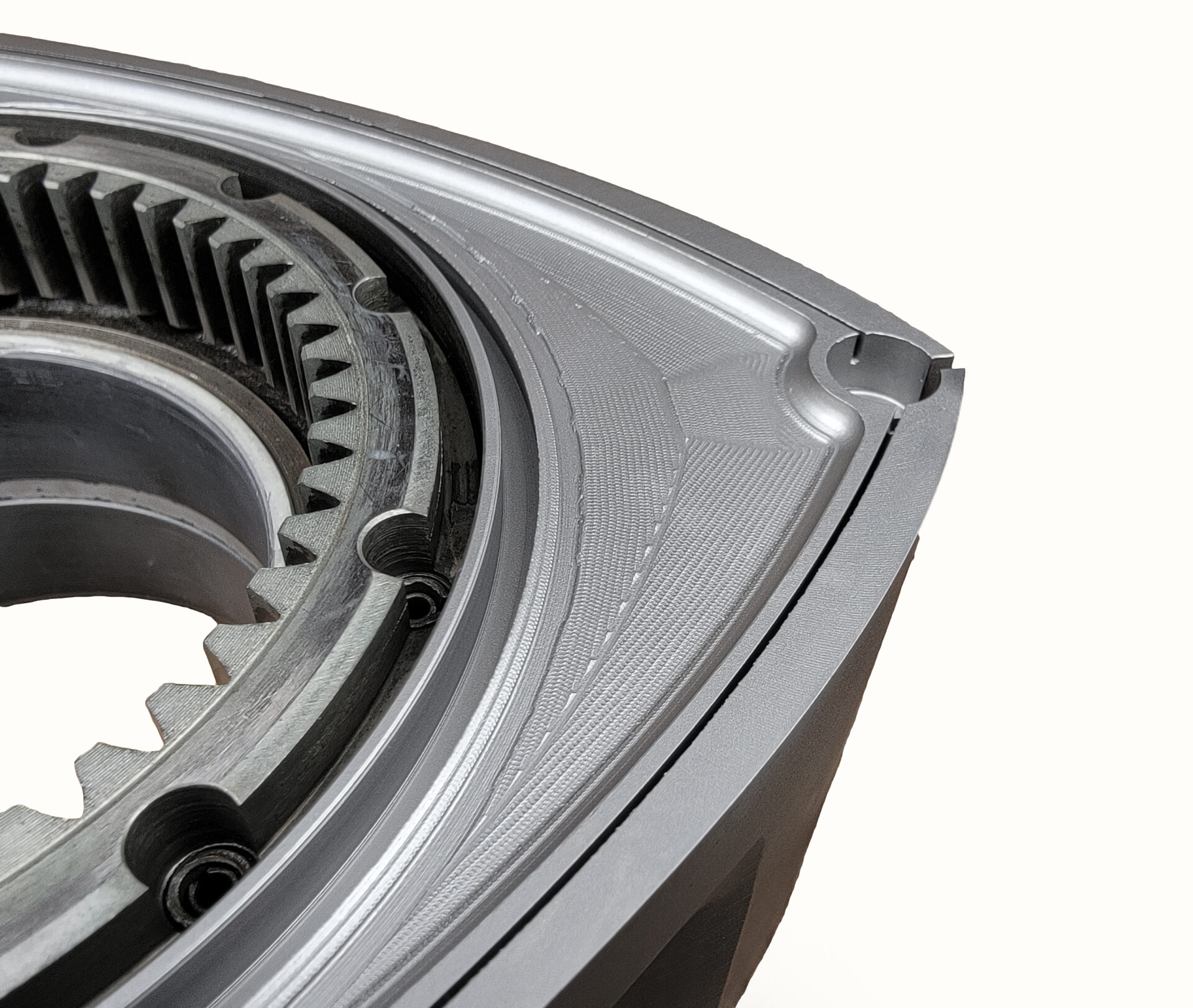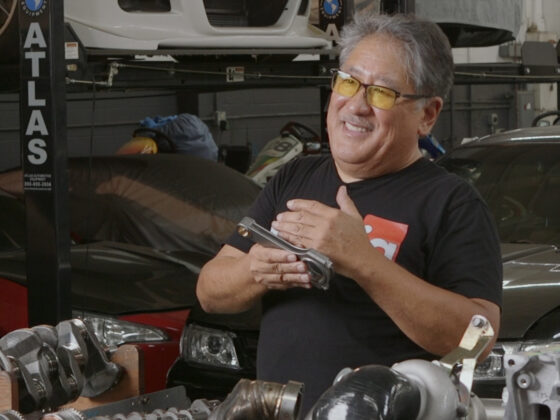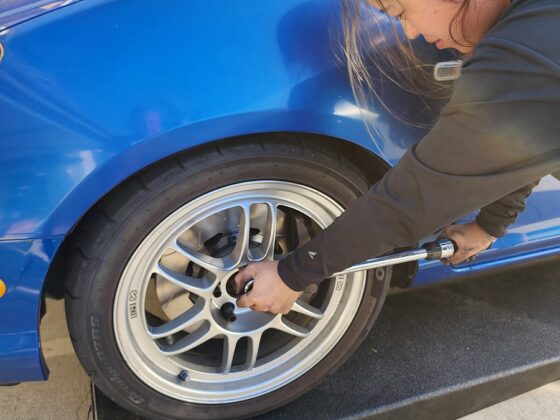 The stock rotor weighed in at 9.7728 lbs, or 4,432.87 grams.
The stock rotor weighed in at 9.7728 lbs, or 4,432.87 grams.
 After the machine work, our two rotors came in at 9.1350 lbs and 9.1352 lbs, or 4,143.57 and 4,143.68 grams respectively. We were very happy with a 0.638lb (289 gram) weight reduction per rotor and the identical weights of the rotors down to the gram. This totaled a significant 1.28lb (578 gram) reduction in rotational mass from our engine, before even more weight was removed from the counter weights when we have the entire assembly balanced.
After the machine work, our two rotors came in at 9.1350 lbs and 9.1352 lbs, or 4,143.57 and 4,143.68 grams respectively. We were very happy with a 0.638lb (289 gram) weight reduction per rotor and the identical weights of the rotors down to the gram. This totaled a significant 1.28lb (578 gram) reduction in rotational mass from our engine, before even more weight was removed from the counter weights when we have the entire assembly balanced.
For comparisons sake, a forged B16 Honda piston with a 81mm (3.19”) bore typically weighs around 270 grams, a forged LS1 piston with a 96mm (3.89”) weighs 430 grams. We essentially lost two pistons worth of weight from our 13B engine, but that’s from rotors that weigh as much as the total piston weight of over (TWO) LS1 V8 engines!
 Our finished rotor was now ready to be sent off to CTP Cryogenics to be thermally treated and WPC for their Metal Surface Treatment.
Our finished rotor was now ready to be sent off to CTP Cryogenics to be thermally treated and WPC for their Metal Surface Treatment.
 We got the rotors back from CTP Cryogenics and WPC Treatment and they looked amazing with the matte/satin silver finish that the WPC process leaves.
We got the rotors back from CTP Cryogenics and WPC Treatment and they looked amazing with the matte/satin silver finish that the WPC process leaves.
 CTP Cryogenics is located in Southern California and have been in the business since 1983. The cryogenic process involves slowly brings down the temperature to -300*F for hours to alter the crystalline structure of the metal, transforming it to a more uniform and durable construct. These changes become permanent as the temperature is gradually brought back up to room temperature or beyond. The total process takes a total of 2.5 days to complete.
CTP Cryogenics is located in Southern California and have been in the business since 1983. The cryogenic process involves slowly brings down the temperature to -300*F for hours to alter the crystalline structure of the metal, transforming it to a more uniform and durable construct. These changes become permanent as the temperature is gradually brought back up to room temperature or beyond. The total process takes a total of 2.5 days to complete.




18 comments
I wonder what Rob Dahm would make it this!
He’s up to date and actually helped originally set up the ECU for this build: https://www.youtube.com/watch?v=2HLwZudQRHk
Sweet!
Was figuring out where this was in the timeline.
The video with Rob was around Part 9, then a standalone ECU was put in the car with a datalogger to get some baseline data on a relatively stock engine. Unfortunately the heater hose that was used as a fuel line by the shop who installed this engine was loose and caught the engine on fire. So between Part 11 and Part 12 is over a year of work upgrading the suspension and drivetrain that will be rolled out here shortly.
Billy, this series is amazing! I keep looking at importing a later JDM model RX7 and part of that research is reading this FD series over and over again. I am scared at the bill for buying and building a rotary, but this series will show everyone how to do it right!
Thanks for the feedback! Just do some safety and reliability-related modifications and enjoy the car! We will be doing articles on those items like the fuel and cooling systems which are crucial for rotaries – also to prevent fires like what happened to my car.
has anyone explored porting/smoothing the casting inside the rotor face (see the very last image)
That would make no difference in anything. except for possibly reducing heat transfer out of the rotor which is not good.
I believe Racing Beat went a step further and removed material and weight from inside the rotor. FWIW, Mazdatrix does not do this and removes weight from the outer side face of the rotor like most shops do. I’m sure removing material from inside the rotor has its merits/advantages; possibly driven by rulebooks in racing.
Great post! But…It’s Rotating Mass, not Reciprocating Mass.
It is a complex mix of both!
Would it be worth it to cryo/WPC treat the side housings?
I think so.
We will be covering that in an upcoming article. In short: YES
Wait, are you going to do a balancing after the machining ? Pretty sure it’s off now.
The rotor were balance from factory.
That is explained in the story!
Following from Japan.
Its great to see a serious build where the focus is on building a highly efficient rx7. I wish we had WPC in NZ… im taking my rotary parts to Japan to get them done.
Thank you Mike and Billy.
This is about as efficient as a rotary can get, it’s an engine with a very high VE but low TE.